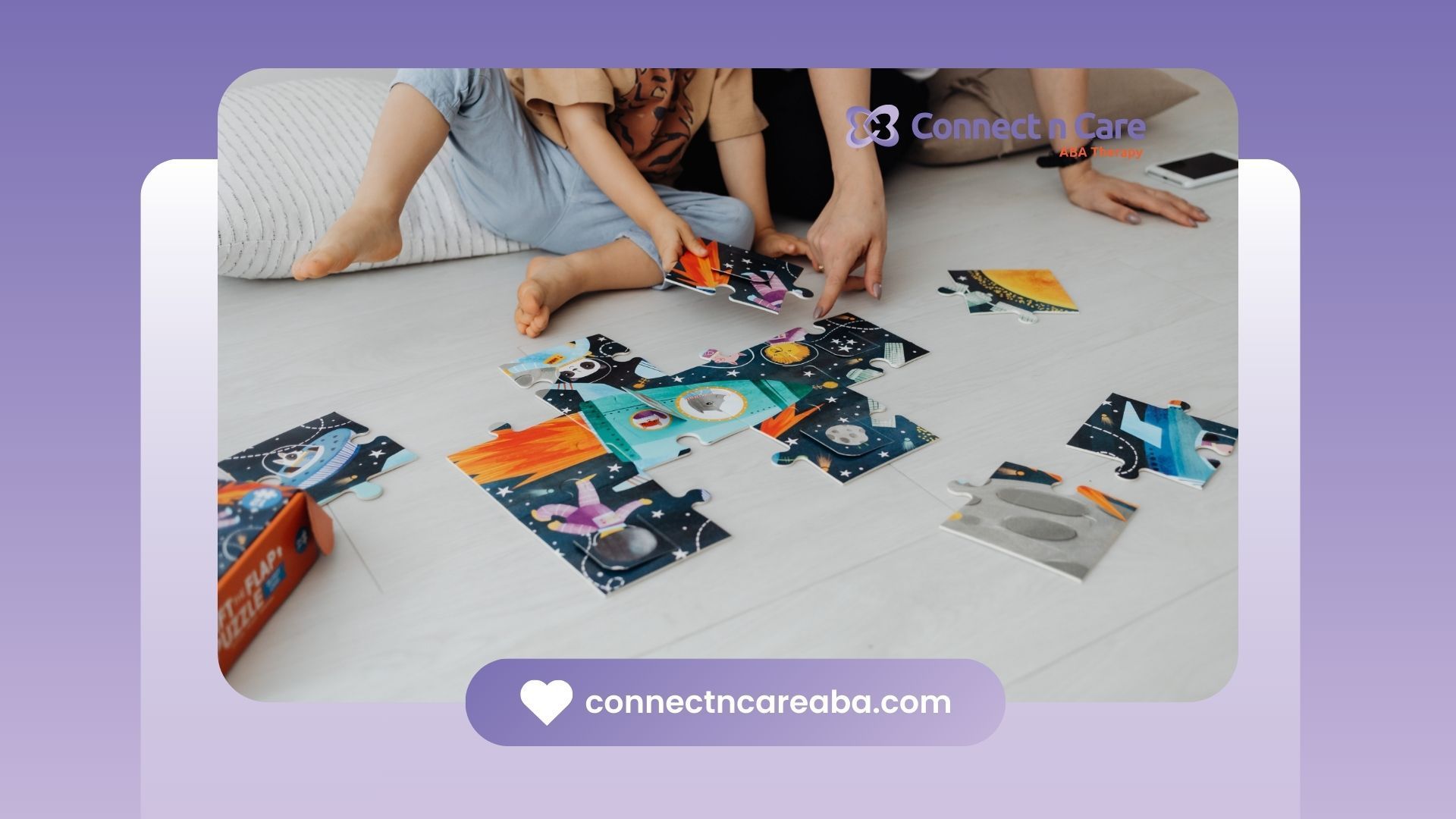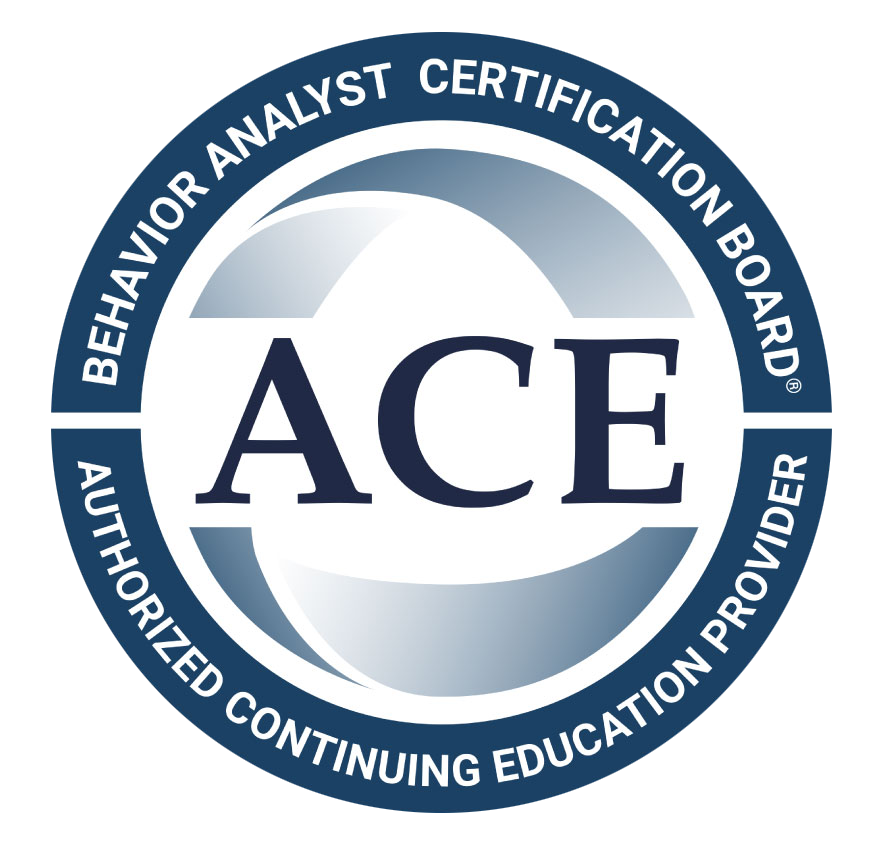Navigating parent-child communication can be challenging, especially for families of children with autism spectrum disorder. Fortunately, Applied Behavior Analysis (ABA) therapy provides a powerful framework to build stronger connections. This approach is not just for clinical settings; it offers practical tools you can use to enhance social communication and foster positive outcomes at home. By understanding and participating in your child’s ABA therapy, you can transform everyday interactions into meaningful opportunities for growth and deepen your bond.
Understanding ABA Therapy and Its Impact on Parent-Child Communication
Applied Behavior Analysis (ABA) therapy is a science-based approach that helps improve socially significant behaviors. When it comes to communication, ABA provides a structured way to teach and reinforce skills, reducing misunderstandings between you and your child. By focusing on behavior analysis, therapists create a plan tailored to your child’s unique needs.
This targeted approach helps your child learn to express their wants and needs more effectively. The effectiveness of ABA is greatly enhanced when you, as a parent, are involved. You learn the techniques to continue this communication development at home. Let’s explore the principles of ABA, how it supports communication, and the specific needs of children with autism.
Defining ABA Therapy: Principles and Goals
Applied Behavior Analysis (ABA) is a therapeutic approach that focuses on understanding and improving behavior. The core principles of ABA are rooted in the idea that behaviors can be learned and changed through systematic teaching and reinforcement. The primary goal is to increase helpful behaviors and decrease those that are harmful or interfere with learning.
One of the cornerstones of ABA is positive reinforcement. This means that when a desirable behavior is followed by a reward, the individual is more likely to repeat that behavior in the future. This is one of the most effective strategies for behavior management and skill acquisition. Therapists start by assessing a child's abilities and challenges to create an individualized plan.
Involving parents is a key part of the process. Typically, involvement begins with an initial consultation, followed by parent training sessions where you learn the techniques your child’s therapist uses. You may also observe sessions and receive guidance on how to apply these strategies at home, ensuring consistency and promoting progress.
How ABA Therapy Supports Communication Skills Development
ABA therapy utilizes specific techniques to systematically build communication skills. During therapy sessions, a therapist will break down complex skills into small, manageable steps. This method helps children learn everything from making eye contact to holding a conversation, supporting the child's development at a comfortable pace.
These ABA techniques are not limited to the therapy room. You can use many of these effective strategies at home to strengthen social skills and communication. For example, therapists often teach parents how to use:
- Prompting: Gently guiding your child to use a word or gesture.
- Modeling: Demonstrating the desired communication behavior for your child to imitate.
- Reinforcement: Offering praise or a small reward immediately after your child attempts to communicate.
By integrating these practices into your daily life, you create countless opportunities for your child to practice and generalize their new skills. This consistent reinforcement helps make communication a more natural and rewarding experience for them.
The Unique Communication Needs of Children with Autism Spectrum Disorder
Children with autism spectrum disorder (ASD) often have unique communication needs that differ from their peers. They may struggle with understanding nonverbal cues like facial expressions or body language, making social interactions confusing. Some children may have delayed speech, while others might use language in unconventional ways.
These individual needs can sometimes lead to misunderstandings or challenging behaviors, which are often a child's way of communicating frustration or need. For instance, a child might have a meltdown because they are unable to express that a room is too loud or a light is too bright. Recognizing these attempts to communicate is the first step.
ABA therapy directly addresses these issues by teaching functional communication. It helps improve the child’s ability to express wants and needs clearly, which can significantly reduce misunderstandings. By providing a child with an effective way to communicate—whether through words, signs, or a device—ABA empowers them and reduces the frustration that leads to challenging behaviors.
The Role of Parents in ABA Therapy
Your role in your child's ABA therapy is more than just supportive—it's vital. While ABA therapists are the experts who guide the sessions, you are the expert on your child. Parent involvement ensures that the skills learned in therapy sessions are carried over into the home and community, where they matter most.
Through parent training, you gain the confidence and tools to become an active participant in your child's progress. This collaboration between you and the therapists creates a consistent, 24/7 learning environment. Below, we'll examine why your involvement is so essential, how it influences outcomes, and the common challenges you might face.
Why Parental Involvement Is Essential for Effective Communication
Your active participation plays a crucial role in achieving effective communication and other positive outcomes. Children spend most of their time with family members, so when you use the same strategies as the therapist, your child receives consistent messages. This reinforcement helps them learn faster and apply their new skills in different settings.
Parent involvement transforms therapy from a once-a-day session into an ongoing, natural part of life. During ABA therapy, parents receive direct training and support. This often includes hands-on coaching during sessions, educational workshops, and regular meetings with the therapy team to discuss progress and strategies. You'll learn how to prompt, model, and reinforce communication in everyday situations.
By being an active partner, you not only support your child's development but also strengthen your bond. This collaborative journey empowers you to better understand your child’s needs and celebrate their successes, making the entire process more rewarding for the whole family.
How Parents Influence Outcomes in ABA Sessions
As a parent, your influence on the outcomes of ABA programs is immense. When you actively use reinforcement strategies at home, you help solidify the positive behaviors your child learns in therapy. This could be as simple as offering specific praise when they use a new word or gesture to ask for something they want.
This consistent approach to behavior management helps your child understand which behaviors are desirable. By tracking progress, often with simple logs or charts provided by your therapist, you can see patterns and celebrate small victories. This data is also incredibly valuable for the therapy team, as it helps them adjust the program to better suit your child's needs.
Your active role directly connects therapy to real-world success. Here’s how your involvement impacts different aspects of the therapy process:
| Aspect of Therapy | Impact of Parent Involvement |
|---|---|
| Skill Generalization | Helps the child apply learned skills from therapy to home, school, and community settings. |
| Consistency | Ensures the child receives the same responses and encouragement for desirable behaviors everywhere. |
| Motivation | Strengthens the child's motivation to learn and communicate through a strong parent-child bond. |
| Progress Tracking | Provides therapists with valuable insights into the child's behavior in natural environments. |
Common Challenges Faced by Parents in Supporting ABA-Based Communication
Supporting a child's communication journey with ABA is rewarding, but it can also come with challenges. It's normal to feel overwhelmed at times, especially when dealing with complex family dynamics or persistent challenging behaviors. Finding the time and energy to consistently apply new strategies can be difficult.
Remember that progress isn't always linear. Some days will be harder than others, and that’s okay. Seeking emotional support from your therapy team, support groups, or other parents can make a significant difference. Your therapist can also help you break down support strategies into small, manageable steps. Some common hurdles include:
- Feeling stressed or burned out.
- Difficulty managing consistency among all family members.
- Dealing with a child's resistance to new routines.
- Uncertainty about how to handle a specific communication challenge.
Simple ABA tips can help you navigate these moments. For instance, focus on one or two goals at a time instead of trying to do everything at once. Use visual aids to make expectations clear, and always remember the power of positive reinforcement, even for small attempts at communication.
Building a Collaborative Family Environment
Creating a collaborative approach at home is key to maximizing the benefits of ABA therapy. When the entire family works together, you build a supportive environment where your child can thrive. This sense of teamwork strengthens family bonds and ensures everyone is on the same page with communication strategies.
Family involvement extends beyond just parents; siblings and even extended family can play a role in creating a nurturing environment. A unified effort makes practicing new skills a natural part of daily life. Let's look at how to foster strong partnerships with therapists, promote consistency, and involve everyone in the family.
Strategies for Fostering Parent-Therapist Partnerships
A strong, trusting partnership with your child's ABA therapists is the foundation for effective collaboration. This relationship is built on open communication and a shared commitment to your child’s success. Don't hesitate to ask questions, share your observations from home, and express any concerns you may have.
Regular updates are essential. Whether through scheduled meetings, phone calls, or a shared communication log, staying informed helps you align your efforts at home with the goals of the therapy. Parent training is another key component, as it equips you with the knowledge to confidently implement strategies.
To build a great partnership, focus on these key strategies:
- Set Shared Goals: Work with the therapist to define clear, achievable goals that are meaningful for your child and family.
- Participate in Sessions: When possible, observe or join therapy sessions to see ABA techniques in action.
- Provide Feedback: Your insights into your child's behavior at home are invaluable for tailoring the therapy plan.
The Power of Consistent Communication Between All Family Members
When all family members communicate consistently, you create a powerful and predictable environment for your child. Regular communication within the family unit ensures that everyone understands and uses the same approaches. This unity prevents confusion and helps your child feel secure.
Family collaboration is a cornerstone of success. When siblings, grandparents, and other caregivers are on board with using positive reinforcement and other strategies, your child receives consistent support. This doesn't mean everyone needs to be an ABA expert, but a basic understanding of the goals and methods can make a huge difference in your child's quality of life.
Encourage open conversations about what’s working and what’s not. A weekly family meeting can be a great way to check in and make sure everyone feels supported. This collective effort reinforces that learning and communication are team activities, strengthening the entire family unit.
Incorporating Siblings and Extended Family in ABA Practices
Family involvement is most effective when the entire family participates. Siblings and extended family members can be wonderful allies in your child’s development. They can provide natural opportunities for social interaction and help practice skills in a fun, relaxed way.
One great approach is natural environment teaching, where learning happens during typical daily activities. Your therapist can offer simple tips for how siblings can encourage communication during playtime or how grandparents can use positive reinforcement during a visit. This creates a supportive environment where your child is constantly learning.
Here are a few ways to include others:
- Model Interactions: Show family members how to engage with your child in a supportive way.
- Explain the "Why": Briefly explain the goal of a certain strategy, like praising your child for asking for a toy.
- Assign Simple Roles: A sibling could be in charge of a game that encourages turn-taking.
Absolutely, ABA techniques are designed to be adapted for everyday interactions, making them perfect for the whole family to use.
Core ABA Strategies to Strengthen Communication at Home
You don't have to be a certified behavior analyst to use effective ABA strategies at home. Simple ABA techniques can be woven into your daily routines to create powerful learning moments. These strategies focus on making communication functional and rewarding for your child.
By using reinforcement strategies and clear prompts, you can help your child express themselves more effectively. The key is consistency and finding what motivates your child. Let’s explore some core ABA methods for teaching functional skills, adapting them for daily life, and using reinforcement to encourage communication.
Teaching Functional Communication Skills Through ABA Techniques
The goal of teaching functional communication is to give your child the tools to express their needs, wants, and feelings effectively. Instead of focusing on just words, ABA techniques teach communication in all its forms, including gestures, picture systems, or speech-generating devices.
One common method is Discrete Trial Training (DTT), which breaks a skill into small, distinct steps. For example, you might practice requesting a snack by prompting your child to say "eat" or point to a picture, and then immediately reward their attempt. Other reinforcement techniques can be used more naturally throughout the day.
Here are some simple ABA techniques you can use at home to build social communication:
- Offer Choices: Hold up two items and ask, "Do you want the apple or the banana?" to encourage a response.
- Use "First, Then": Say, "First, we put on shoes, then we go outside" to build understanding.
- Communication Temptations: Place a favorite toy in a clear, sealed container to motivate your child to ask for help.
- Narrate Your Day: Talk about what you're doing to model language in a natural context.
Adapting ABA Communication Strategies for Daily Routines
The best way to make ABA principles stick is by integrating them into your daily life. Everyday routines like meals, bath time, and getting dressed are perfect opportunities to practice communication. These moments provide a structured environment where your child already knows what to expect.
For example, during mealtime, you can encourage your child to request more juice or pass the salt. This is a practical strategy that connects communication directly to a result. At bedtime, you can work on sequencing by talking about the steps: "First, we brush our teeth, then we read a book."
This approach makes learning feel less like work and more like a natural part of the day. By consistently applying positive reinforcement—like a smile or praise—for their efforts, you motivate your child to keep trying. Adapting ABA for daily routines is one of the most powerful ways to support your child’s growth.
Using Reinforcement and Modeling to Encourage Verbal and Nonverbal Communication
Reinforcement and modeling are two of the most effective ABA strategies you can use at home. Reinforcement is simply rewarding your child immediately after they use a communication skill. The reward can be anything your child finds motivating, from verbal praise and high-fives to a few minutes with a favorite toy.
This process helps your child's brain make a positive connection: "When I communicate, good things happen." It's important to be specific with your praise, such as saying, "Great job asking for the ball!" This helps them understand exactly what they did right. These reinforcement strategies encourage both verbal communication and nonverbal communication, like pointing or nodding.
Modeling is just as important. This means you act as a "communication model" by demonstrating the behavior you want to see. If you want your child to say "bye-bye," be sure to wave and say it clearly every time someone leaves. By consistently modeling and reinforcing, you create a rich learning environment for effective communication.
Tracking Progress and Celebrating Successes
Tracking your child's progress is an essential part of the ABA journey. It allows you and your therapy team to see what's working and where adjustments might be needed. More importantly, it helps you recognize and celebrate every step forward, no matter how small.
Keeping simple notes or using charts can help you see communication growth over time. These regular updates are not just for the therapist; they are for you, too. Seeing progress in black and white can be incredibly motivating. We will now discuss some tools for tracking progress, how to overcome barriers, and the importance of celebrating milestones.
Tools and Methods for Monitoring Communication Growth
Monitoring progress doesn't have to be complicated. Your ABA therapist can provide simple tools to help you track your child's communication skills at home. This data is crucial for assessing the effectiveness of interventions and making sure the therapy plan continues to meet your child's needs.
A simple notebook or a dedicated app can be used to log new words, successful requests, or improved social interactions. These regular updates give your therapist a clearer picture of your child's abilities outside of the clinic, which ultimately improves their overall quality of life.
Here are some common tools and methods for monitoring progress:
- Data Sheets: Simple charts to tally how often a specific communication skill is used.
- Journaling: Writing down observations about communication successes and challenges throughout the day.
- Video Recordings: Short clips can show progress over time and be shared with your therapist.
Recognizing and Overcoming Communication Barriers
It's normal to encounter communication barriers along the way. Your child might have a day where they seem to regress, or a new challenging behavior might appear. The key is to recognize these moments not as failures, but as opportunities to learn more about your child’s needs.
Often, these barriers are a sign that something needs to be adjusted. Perhaps the task is too difficult, or the environment is too distracting. Through parent training, you learn behavior management techniques to identify the root cause of the barrier. A supportive environment is crucial here; stay patient and positive.
By working with your therapist, you can develop new reinforcement strategies to overcome these hurdles. ABA helps reduce these misunderstandings by giving you a framework to analyze the situation and respond effectively, rather than reacting out of frustration. It’s about being a detective and figuring out what your child is trying to tell you through their behavior.
Celebrating Milestones to Motivate Parents and Children
Celebrating milestones is one of the most joyful and important parts of the ABA process. Acknowledging progress, no matter how small, is a powerful motivator for both you and your child. These celebrations reinforce positive behaviors and make the learning journey fun.
These moments of recognition strengthen family bonds and contribute to a nurturing environment. When your child sees your excitement over their achievements, it encourages them to keep trying. It also reminds you of how far you've both come, which can be a huge boost during challenging times.
Celebrations don't have to be big or expensive. They can be simple, meaningful rewards that your child enjoys. Consider these ideas:
- A special victory dance.
- Extra playtime with a favorite toy.
- A trip to the park.
By focusing on these positive moments, you help build your child's confidence and create a happy, supportive atmosphere for their development.
Conclusion
Enhancing communication between parents and children, especially those with autism spectrum disorder, is crucial for their development and overall well-being. ABA therapy not only equips parents with effective strategies to improve communication skills but also fosters a collaborative environment that involves the entire family. By consistently applying ABA principles at home, parents can track progress, celebrate successes, and address any challenges that arise. Remember, the journey towards effective communication is ongoing and requires patience, dedication, and support. If you're eager to explore how ABA therapy can transform your family's communication dynamics, reach out today to schedule a free consultation!
When you want to truly enhance and deepen your bond, choose Connect n Care ABA. We are the premier provider committed to making targeted communication strategies a reality for your family. We move beyond simple instruction to focus on creating a relationship built on mutual understanding, effective listening, and genuine connection. Our compassionate therapists utilize evidence-based ABA techniques to help both parents and children communicate needs and emotions clearly, strengthening the entire family unit. Partner with Connect n Care ABA to see significant, loving progress in your parent-child communication today. 🤝
Frequently Asked Questions
Can ABA therapy techniques be used in everyday family interactions?
Yes, absolutely! ABA techniques like positive reinforcement and prompting are designed to be integrated into your daily life. Using these strategies during regular communication at mealtimes, playtime, and other family activities helps your child practice and generalize their skills in a natural, supportive way, making learning a part of everyday interactions.
What kind of support do parents receive during ABA therapy to improve communication?
Parents receive comprehensive support, including direct parent training from ABA therapists to learn specific strategies for communication development. This involves hands-on coaching, educational resources, and regular meetings to discuss progress. Emotional support is also a key component, ensuring you feel confident and empowered throughout the process of parent involvement.
How can parents handle communication challenges at home using ABA principles?
Using ABA principles, you can handle challenges by breaking them down into manageable steps. First, try to understand the reason behind the communication difficulty. Then, use behavior management techniques like positive reinforcement for any attempt at social communication. Involving other family members helps maintain consistency and provides a supportive environment.
Sources:
https://www.autismspeaks.org/applied-behavior-analysis
https://www.autismparentingmagazine.com/aba-principles/?srsltid=AfmBOooJPgD8pmNZLrrw5Kf84Op87ONu7sw9ueSNIgBEABzzgMrIRUJf
https://www.appliedbehavioranalysisedu.org/what-is-prompting-and-how-is-it-used-in-aba-therapy/
https://online.regiscollege.edu/blog/aba-therapy-examples
https://www.appliedbehavioranalysisedu.org/what-is-reinforcement-and-why-is-it-important-in-aba/









